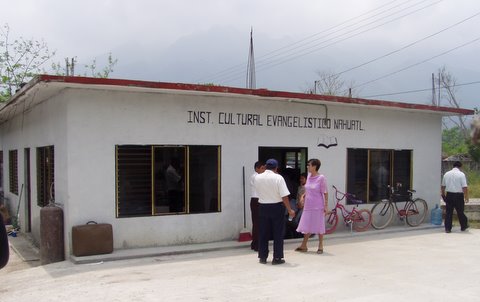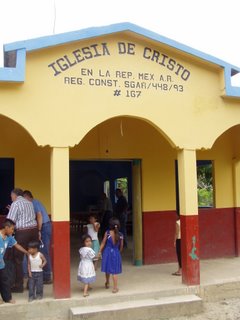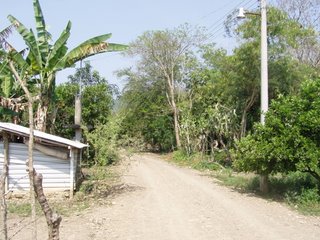Huichihuayán, Huehuetlán Municipality
On Tuesday of the week I spent in San Luis Potosí, Mexico, we went to the Cultural Institute for Nahuatl Evangelism (Instituto Cultural Evangelístico Náhuatl), more colloquially known as “the school.” Located in the town of Huichihuayán (wee-chee-wah-YAHN), this is more precisely a preachers training school, where men from all over the Huasteca come to learn how to preach the Gospel and to learn more about God’s Word. In recent years brother José Hernández Félix has been the director, and he has brought about many good things for the school, and accordingly the student body has grown greatly.
The concrete building is well furnished, even with a kitchen where a hired cook fixes the meals for those staying there. The inside of the building is painted a pleasant lime green colour, and as you walk in the door you will find yourself in the main room of the building, alternately used as a classroom and a dining hall. Down the hall are some classrooms and a bathroom. It is really a nice facility, and I am so glad that there is such a work going on in that area to further the kingdom. Read More

 After visiting the congregation of the Lord’s church at
After visiting the congregation of the Lord’s church at 